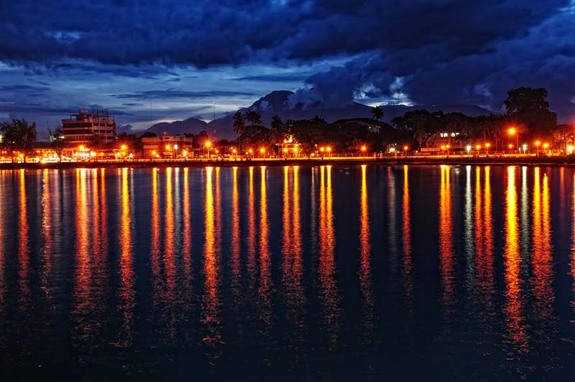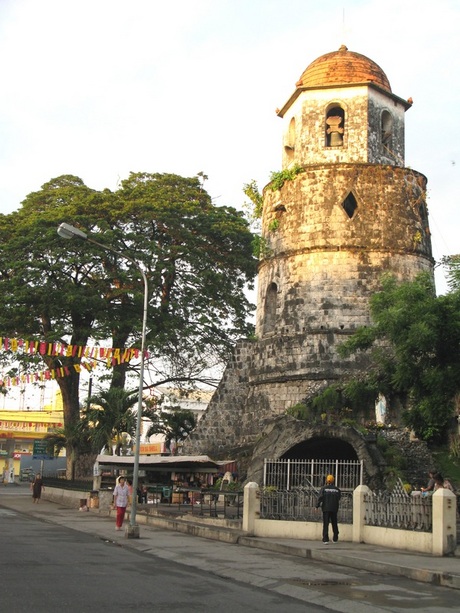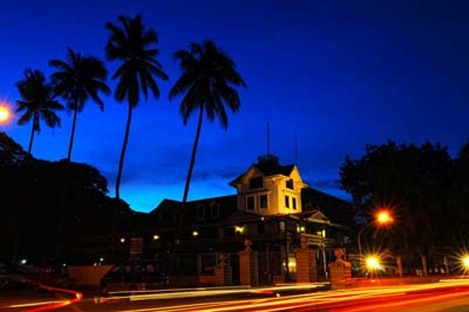the Boulevard, Dumaguete City

The promenade by the bay is Dumaguete City’s tourism hub. Built up beginning 1916 the 780-meter strip, shaded by venerable old trees, has green lawns, benches and ornate park lamps. A monument marks the landing site of the Belgian nuns who founded, in 1904, St. Paul University Dumaguete, the first institution of the Sisters of St. Paul de Chartres in the Philippines. The Boulevard’s northernmost stretch curves past Silliman Hall towards the Dumaguete pier. The ship carrying Dr. Jose Rizal to his Dapitan exile was said to have briefly dropped anchor here, during which Dr. Rizal walked along the Boulevard to visit with the family of Dr. Jose Longa. The Boulevard parallels a row of some the City’s finest hotels and restaurants, and landmark residences such as those of former Provincial Governors Don Miguel and Don Julian Teves, and Don Mariano F. Perdices.
Campanario (Dumaguete Belfry), Dumaguete City

The best-known landmark in the Province, the Campanario was built to serve as belfry and look-out tower during a time of frequent moro raids. It has four graduated levels, each succeeding story smaller than the one below it. Fray Jose Manuel Fernandez de Septien completed the two lower levels in the 1760s. In the 1870s Fray Juan Felix de la Encarnacion added the third and fourth levels, and three buttresses to protect the tower from earthquakes. Excluding the buttresses, the Campanario stands on approximately 154 square meters in the southeastern corner of the Cathedral of St. Catherine of Alexandria compound, rising 20 meters to the tip of its small dome. It is circular in shape, made of cut coral stone, mortar and brick to take advantage of the insulating quality of the material. The biggest and also the oldest bell in the Campanario is dated 1818. A second bell is marked 1932, and is dedicated to St. Joseph the Patriarch. The third bell is inscribed 1933 in honor of the patron, St. Catherine of Alexandria. The smallest bell is dated 1936, a gift from the Honculada family.
Silliman Hall, Silliman University, Dumaguete City

Originally a New York theatre building reassembled in Dumaguete in 1903 to cradle the fledgling Silliman Institute founded in 1901. The oldest structure on campus, its architecture and architectural details such as cast iron posts distinguish it as early Americana. The ground floor served as Administrative Offices and Assembly Hall while the second and third floors housed dormitories for boys. The second floor is now the home of the Silliman University Ethno-Anthro Museum.
